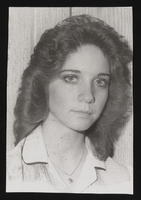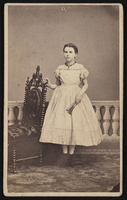Search the Special Collections and Archives Portal
Search Results
J. T. McWilliams and family, 1930-1938
Level of Description
Scope and Contents
Materials contain photographs of J. T. McWilliams and the McWilliams family from 1930 to 1938. McWilliams was a surveyor and civil engineer who founded the original Las Vegas townsite (McWilliams Town). He also owned a portion of Lee Canyon, which he donated to become a public park.
Archival Collection
Pagination
- Previous page ‹‹
- Page 7
Archival Component
1938-1959
Level of Description
Archival Collection
Pagination
- Previous page ‹‹
- Page 7
Archival Component
Howard Hughes's around-the-world flight photographs, 1938
Level of Description
Scope and Contents
Materials depict the celebrations of Howard Hughes's circumnavigation flight in 1938. Along with a crew consisting of Harry Connor, Tom Thurlow, Richard Stoddart, and Ed Lund, Hughes flew the Super Electra on a global circumnavigation flight. On July 10, 1938, Hughes and the crew departed Floyd Bennett Field in New York and flew to Paris, France, Moscow, Russia, Omsk, Russia, Yakutsk, Russia, Fairbanks, Alaska, and Minneapolis, Minnesota before landing back in New York on July 14. The photographs primarily depict the parades thrown for Hughes after completion of the flight. The photographs also depict Hughes and his crew meeting with New York City Mayor Fiorello La Guardia at New York City Hall, the National Press Association, and crowds of onlookers who attended the plane's landings in various cities.
Archival Collection
Pagination
- Previous page ‹‹
- Page 7
Archival Component
Ashley Hall oral history interview
Identifier
Abstract
Oral history interview with Ashley Hall conducted by Claytee D. White on September 2, 2015 and September 22, 2015 for the Building Las Vegas Oral History Project. Hall discusses being the city manager of Las Vegas, Nevada during the early portion of the development of Summerlin, Nevada by the Hughes Corporation. He also discusses his earlier life before politics, pertaining to Nevada Trench Safety.
Archival Collection
Harry Hall oral history interview
Identifier
Abstract
Oral history interview with Harry Hall conducted by Dennis McBride on June 20, 1986 for the Boulder City Library Oral History Project. Hall discusses how the hope of work on the dam encouraged his move to Nevada with his mother and stepfather. He then talks at some length about living in a tent in Ragtown, the various illegal bootlegging establishments along the dirt road running between Las Vegas and Boulder City, Nevada, and working on the dam. He continues talking about working conditions, the heat, and the labor strike at the dam in August, 1931.
Archival Collection

Susan Hall: photographic print
Date
Archival Collection
Description
Image

Sallie O. Hall: photographic print
Date
Archival Collection
Description
Image
Hall, Robert J.
Level of Description
Archival Collection
Pagination
- Previous page ‹‹
- Page 7
Archival Component
Hall, 2000
Level of Description
Archival Collection
Pagination
- Previous page ‹‹
- Page 7
Archival Component
Fishing guides, 1938
Level of Description
Archival Collection
Pagination
- Previous page ‹‹
- Page 7
Archival Component
